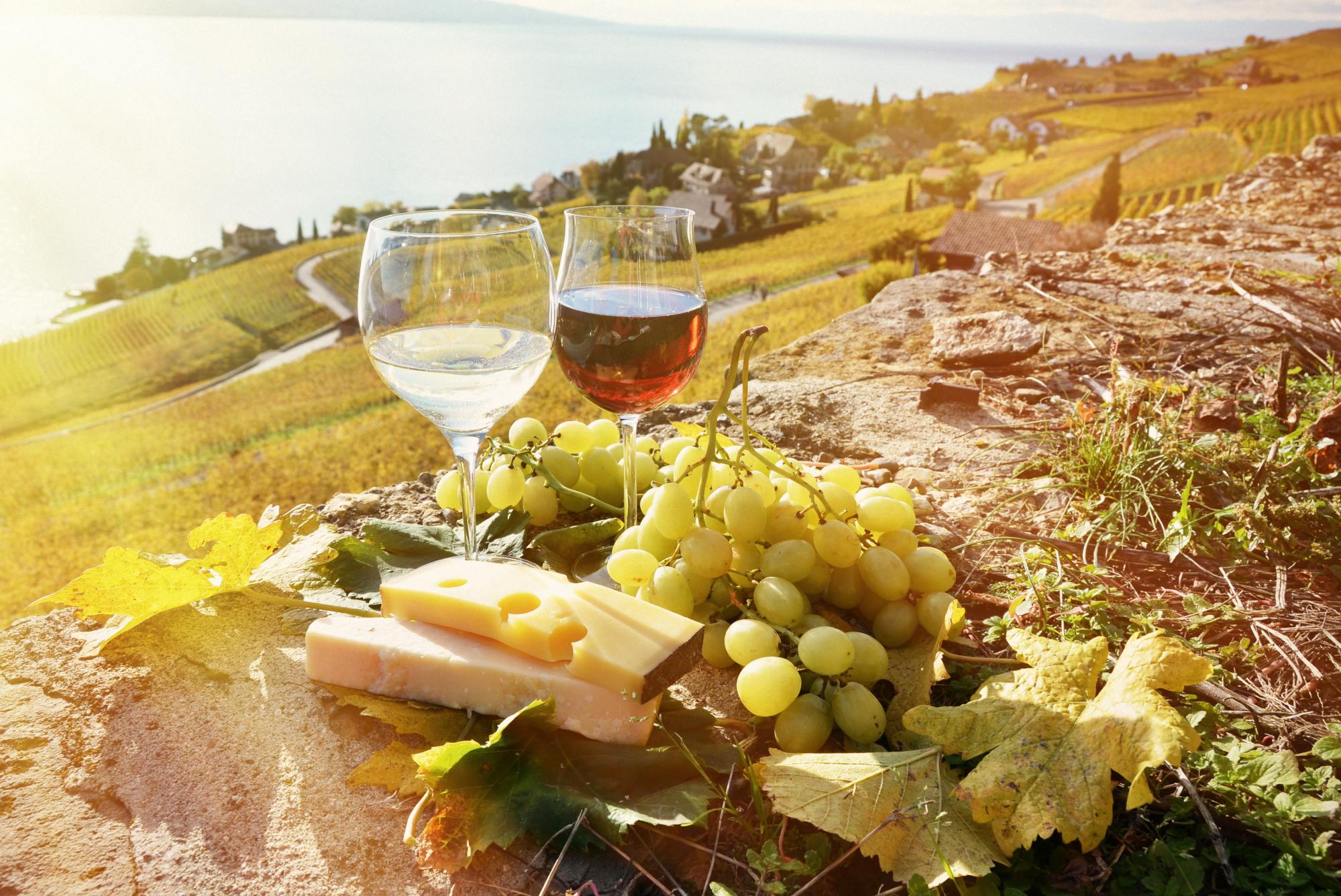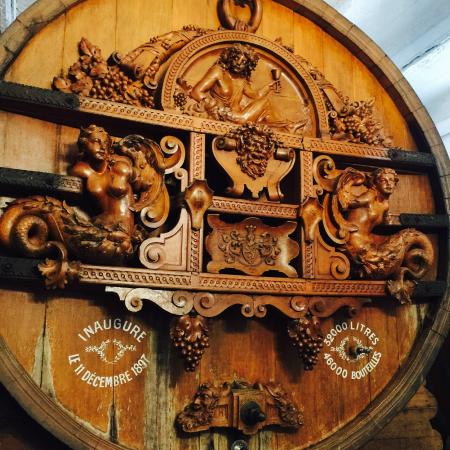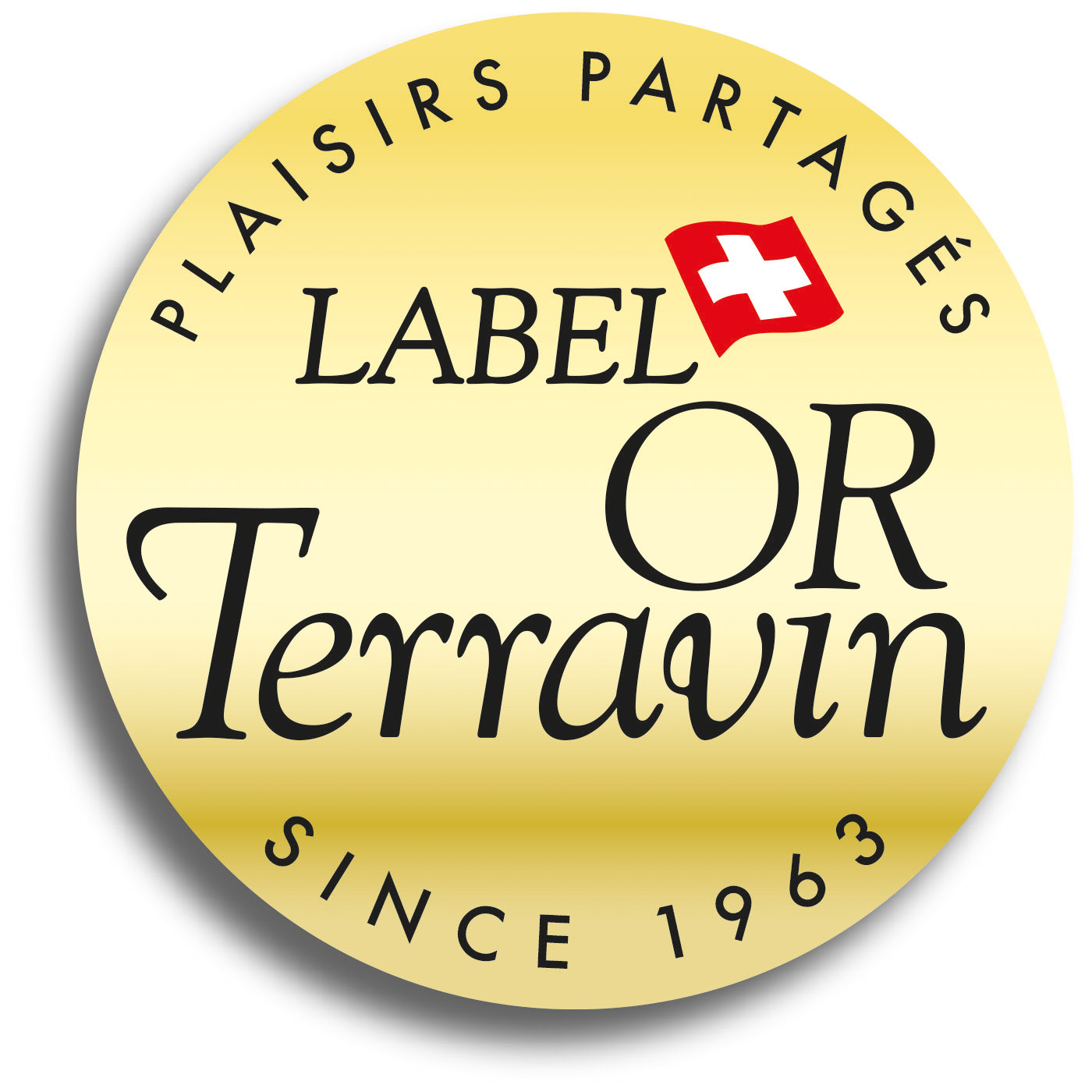
THE VINEYARDS
The Canton of Vaud, in the western part of Switzerland, is home to one of the country’s major wine-growing areas. Its almost four thousand hectares are divided into four areas at each point of the compass. Arising west of the Canton’s capital Lausanne, one of these areas – Lavaux – overlooks Lake Geneva as if suspended between heaven and earth. This marvellous landscape is worth more than a detour: it fully justifies a dedicated trip.
The steep stone-walled terraces – jewels of the World Natural Heritage as acknowledged by UNESCO – are due to the work of Cistercian monks. Formerly located in the Haut-Crêt Abbey close to Oron and in the Montheron Abbey, nestling in the Jorat woods, these fervent and industrious men of God were entrusted by the Bishop of Lausanne with clearing and shaping this previously uncultivated land. From 1141 onwards and for almost two centuries, it was their tireless labour which shaped the magnificent outline of the Dézaley vineyard, at the very heart of the Lavaux area.
The Lavaux landscape is an open book unveiling a few stages of the Earth’s geological history. The 30 million year old sandstone base runs alongside slightly more recent pudding stone and marl beds. These layers streak the vineyards to make up its basic structure. But it was the Ice Ages which finally set the landscape. Repeated glaciations started 2 million years ago and ended 10,000 before our time, leaving highly visible marks. In particular, the Rhône glacier dug the bed of Lake Geneva, depositing its moraine which provided the precious soil for our vineyards.
The scene was set to enable 50 generations of wine growers, a few thousand years on, to perfect nature’s work and shape the current landscape – a ribbon of vineyards crowned with the forest.
Under the benign influence of the lake which moderates temperature differences, Lavaux’s climate in summer is hot but not exceedingly dry. Sometimes harsh in winter, the cold is mitigated by periods of thaw. Lake Geneva never ices over and, each winter, welcomes myriads of birds fleeing the North.
The average yearly temperature is close to 10°C. Although the thermometer may go down to -12°C in January or February, each summer it records 30 to 60 days above 25°C. The west wind carries humidity from the Atlantic, while the bise – from the north-west – ensures stable and dry weather.
The vineyards fully enjoy the generous sun rays thanks to the slope’s ideal aspect. The heat accumulated in the walls and reflected by the lake’s still waters in September also helps to bring to the grapes to full maturity.
A lovely example of man-made landscape, the Lavaux vineyards hang on to the slopes between the sky and the lake. More than part of the landscape, the vineyards ARE the landscape itself thanks to the countless walls – several hundred kilometres – which support, surround and delineate them by making up dozens of overlying terraces.
The construction of terraces on the Dézaley’s steepest slopes goes back to the 13th century.




OUR HISTORY
The Fonjallaz family has been rooted in the village of Epesses since 1552. Originally from Petit-Bornand, a commune in the French department of Haute-Savoie, the family settled in Switzerland after our ancestor Henry walked over to the northern shore of Lake Geneva to accompany his son Pierre, who had found work as an unskilled vineyard worker.
The Fonjallaz were granted the Epesses citizenship in 1630 after succeeding in purchasing an initial piece of land. The legend had started.
Twelve generations on, many of Henry’s descendants pursue the family tradition related to the noble work of the vineyards and wine.
His estate currently covers an area of thirty hectares spread between the prestigious appellations of Epesses, Villette, St-Saphorin, Calamin and Dézaley, without forgetting the vineyards which enshrine the imposing Château du Châtelard, on the commune of Montreux.
Proud of this age-old heritage and grateful to his forebears for having built it up, Patrick Fonjallaz is in honour bound to make the estate grow while strictly observing its exacting traditions.
The involvement in the vineyards of Lavaux by the Fonjallaz family dates back to the 16th century, making it Switzerland’s oldest family firm. Patrick Fonjallaz, who represents the 13th generation, is the current owner. The domain is 34 hectares, and the wines are all made on the property. The harvest of another 15 hectares from growers, family and neighbours are added to the domain’s own grapes.
A little less than two-thirds is white wine, from Chasselas with a small amount of Viognir and Sauvignon. The one-third red wine comes from several grape varieties: Pinot Noir, Gamay, Diolinoir, Plant Robert, Garanoir, Gamaret and a small amount of Cabernet Franc.
The wine production covers 7 appellations, bottling and marketing under 15 labels, of which the best-known is Clos de la République. Clients are welcomed in Epesses where the winery has a beautiful cellar in wood that houses a 32,000 liters vase, with a terrace that has a magnificent view, a reception area big enough to handle large groups. The near-totality of Fonjallaz wines that are sold carry the Terravin label, a guarantee of quality and authenticity.
The Cellar
The cellar was built in 1896 to house a 32,000-litre cask manufactured by a cooper from Schaffhausen, Peter Heiderich, who presented it at the National Exhibition held in Geneva that same year. To this day, this wine vat remains the largest wooden barrel in the Canton.
The cellar and two adjoining rooms now serve to host visitors for drinks, banquets, conferences or workshops. The kitchen next door provides tailor-made services.
NEWSLETTER
RECEIVE THE LATEST NEWS AND EXCLUSIVE OFFERS






